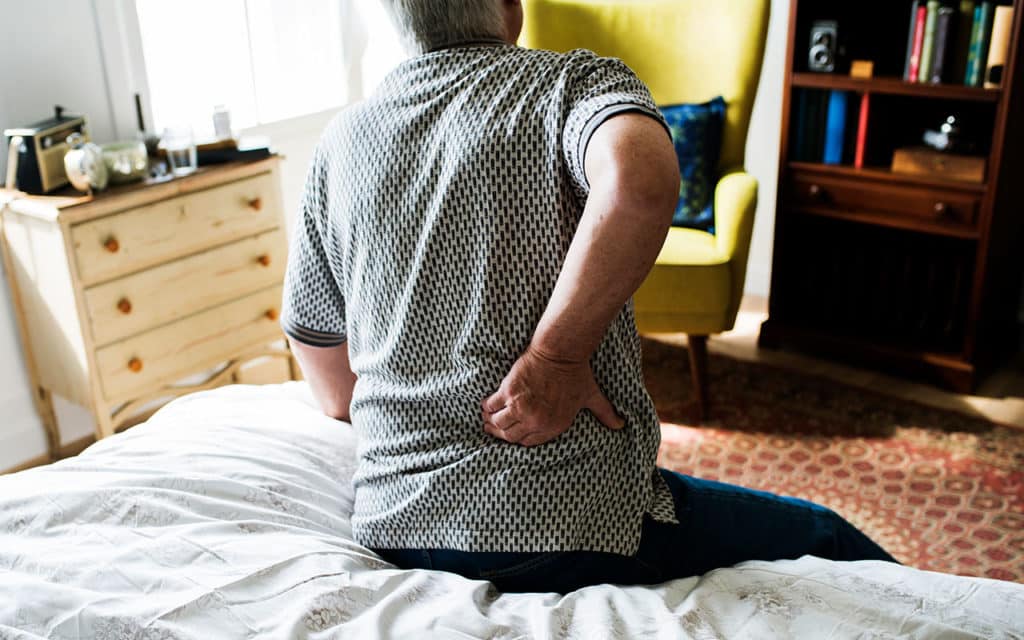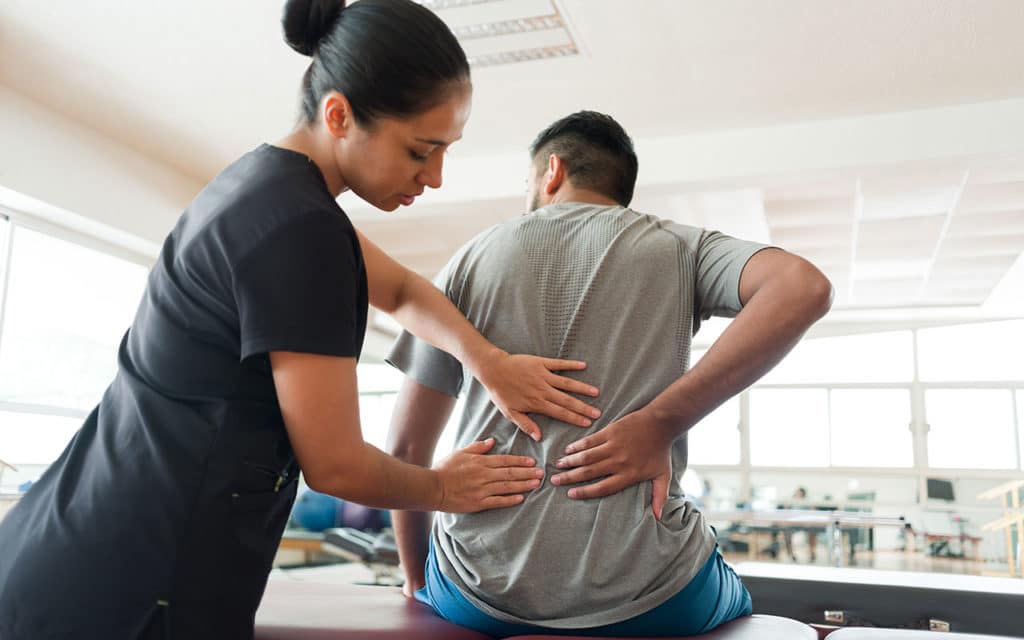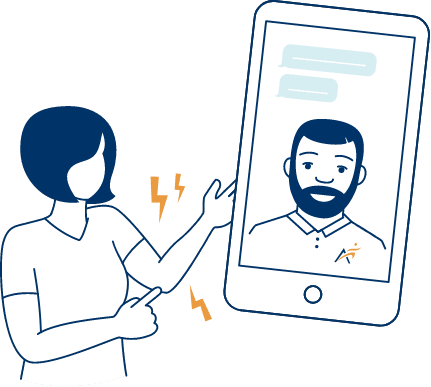(21,000+ reviews on Google across 150+ locations)
Herniated discs are very common, but they’re not always the true cause of back pain. Join Jesse Wallace, DC as he defines what a disc herniation is and why it’s misunderstood. He also explores the various treatment options available for resolving this condition.
The spine is made up of a series of connected bones called “vertebrae.” The vertebral disc is a combination of strong connective tissues which hold one vertebra to the next and acts as a cushion between the vertebrae. These discs are made of a tough outer layer called the “annulus fibrosus” and a gel-like center called the “nucleus pulposus.” When the nucleus pulposus bulges or ruptures, it can press on the various nerve roots in your spine and can cause pain, numbness, or muscle weakness in the arms or legs.
A herniated disc may also cause back pain, but back pain alone (without leg pain) can have many causes other than a herniated disc. This condition is often known as a bulging disc or slipped disc, but its medical term is “herniated nucleus pulposus,” or more commonly, a “herniated disc.”
Disc injuries can be separated into three categories:

The most common herniated disc cause is often natural disc degeneration over time. However, sometimes a traumatic or sudden movement, such as a fall or accident, can lead to a herniated disc. In addition, several lifestyle factors can increase your odds of suffering from a disc herniation, such as:
Due to the complex nature and anatomy of the spine, you might have a herniated disc without even knowing. Herniated disc symptoms can vary dramatically based on the severity of injury, as well as location within the spine. In addition, you may feel pain moderately or intensely and experience multiple symptoms at once, or little to none.
The cervical spine is made up of seven vertebrae in the neck. The cervical vertebrae give the neck its mobility. If you’re suffering from a cervical disc herniation, you’ll likely experience a few of these symptoms:
The thoracic spine consists of the 12 vertebrae of the mid back, below the cervical spine. It’s considered the most complex region of the spine since it is the only region where the vertebrae are also attached to the rib cage. Due to this specific location and structure, a thoracic disc herniation is likely to cause symptoms in the chest, abdomen, and mid back.
The lumbar spine is made up of five large vertebrae in the lower back. Because these vertebrae are more mobile than the others and will endure the most force from activities like lifting and jumping, they are also the most vulnerable to spinal and disc injuries.

If you’re experiencing back pain, or any of the symptoms describing a herniated disc, your doctor may perform a physical and neurological exam to check your reflexes, muscle strength, range of motion, and pain levels. If you’ve suffered from a back injury or have been experiencing chronic lower back pain, imaging tests may be used to find and diagnose the possible causes.
Conservative treatment is usually the first and best option for a bulging disc. Your doctor will likely suggest rest from physical activity, physical therapy, massage, and medications, such as NSAIDS or muscle relaxers, to treat your symptoms. For more severe and painful disc injuries, you may need steroid injections, ultrasound therapy, and surgery to help alleviate symptoms.

If left untreated, a herniated disc can worsen over time, leading to possible nerve damage or chronic back pain that may require more serious intervention. If you are suffering from a herniated disc, or experiencing any of the symptoms, consider Airrosti. At Airrosti, our Providers can help treat your pain, without the need of surgery or injections, in as little as 3 to 4 visits, based on patient-reported outcomes.
To learn more about Airrosti and what to expect on your first visit, click here. If you’re ready to begin your recovery and get back to living your life to the fullest, call (800) 404-6050 or schedule an appointment online today!
Reviewed by Casey Crisp, Doctor of Chiropractic
Disclaimer: Always consult with your doctor before starting any exercise program. If you experience any numbness, tingling or reproduction of your symptoms, please contact your doctor.

I came in more than a month back with a bad herniated disc, which radiated pain through my sciatic nerve as well. I could barely walk or move and was in pretty bad shape. Dr. St. Dizier was very warm and comforting and guided me as to what the problem was and what the solution would be. He helped me in each session by explaining the exercises I was to do and helped me understand the progress I had made as well. I found him to be very positive and encouraging. He patiently answered all the endless questions I had as well. I feel lucky to have been his patient, and I strongly recommend him and Airrosti to anybody who wants to get well soon and sustainably!
by Spruha Kamdar
